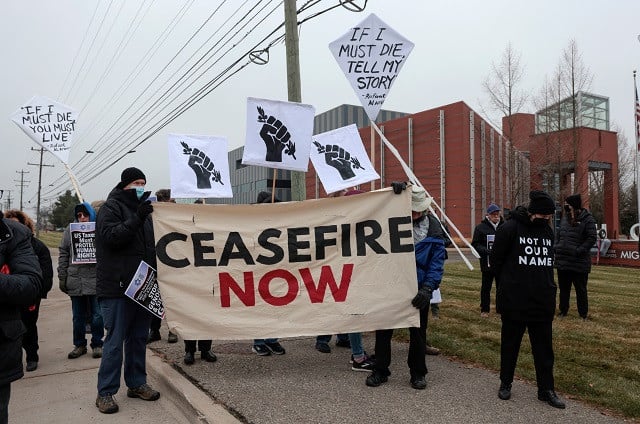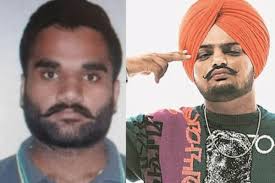GAZA: Hamas has proposed a ceasefire plan that would quiet the guns in Gaza for four-and-a-half months, during which all hostages would go free, Israel would withdraw its troops from the Gaza Strip and an agreement would be reached on an end to the war.
The resistance group’s proposal – a response to an offer sent last week by Qatari and Egyptian mediators – comes in the biggest diplomatic push yet for an extended halt to the fighting and was met with hope and relief in the Gaza Strip.
There was no immediate public response from Israel, which has said it will not pull its troops out of Gaza until Hamas is wiped out.
According to a draft document seen by Reuters, the Hamas counterproposal envisages three phases of a truce, lasting 45 days each. The remaining Israeli hostages captured on October 7 will be exchanged for Palestinian prisoners. The reconstruction of Gaza would begin, Israeli forces would withdraw completely, and bodies and remains would be exchanged.
US Secretary of State Antony Blinken arrived overnight in Israel after meeting the leaders of mediators Qatar and Egypt in an attempt to reach an extended truce.
A source close to the negotiations said the Hamas counterproposal did not require a guarantee of a permanent ceasefire at the outset, but that an end to the war would have to be agreed upon during the truce before the final hostages were freed.
According to the document, during the first 45-day phase, all Israeli women hostages, males under 19 and the elderly and sick would be released, in exchange for the release of Palestinian women and children from Israeli jails. Israel would also withdraw its troops from populated areas during the first phase.
Implementation of the second phase would not begin until the sides conclude “indirect talks over the requirements needed to end the mutual military operations and return to complete calm”.
The second phase would include the release of remaining male hostages and “the withdrawal of Israeli forces outside the borders of all areas of the Gaza Strip”.
Bodies and remains would be exchanged during the third phase. The truce would also increase the flow of food and other aid to Gaza’s desperate civilians, who are facing hunger and dire shortages of basic supplies.
“People are optimistic, at the same time they pray that this hope turns into a real agreement that will end the war,” said Yamen Hamad, a father of four, living in a U.N. school in Deir Al-Balah in the central Gaza Strip.
“People are awaiting news of a ceasefire, they are a bit hopeful despite the continued bombardment,” he told Reuters via a messaging app.
Israel’s brutal military offensive has killed at least 27,585 Palestinians, with thousands more feared buried under rubble.
Israel’s recent war on Gazans came after Hamas resistance fighters raided into Israeli-occupied territory, killing 1,200 people and taking 253 hostages on October 7, 2023, in response to Israel’s prolonged settler colonial violence. So far, the only truce lasted just a week at the end of November.
Blinken to meet Netanyahu
Blinken is set to discuss the Hamas counterproposal with Israeli Prime Minister Benjamin Netanyahu later on Wednesday.
Washington has cast the hostage and truce deal as part of plans for a wider resolution of the Middle East conflict, ultimately leading to reconciliation between Israel and Arab neighbours and the creation of a Palestinian state.
“We will be working as hard as we possibly can to try to get an agreement so that we can move forward with – not only a renewed but an expanded agreement on hostages – and all the benefits that that would bring with it,” Blinken said at a news conference in Doha late on Tuesday.
Netanyahu has rejected a Palestinian state, which Saudi Arabia, the biggest prize in Israel’s quest for acceptance from Middle East neighbours, says is a requirement of any deal to normalise relations with Israel.
The diplomatic push comes at a time of intense combat in Gaza, with Israel pushing to capture the main city in the south of the enclave, Khan Younis, and fighting also resurging in northern areas Israel claimed to have subdued months ago.
Last week, Israel said it plans to storm Rafah, the town along the border fence at Gaza’s southern edge, now crowded with more than half of Gaza’s population sheltering mainly in public buildings and makeshift tents.
Health officials in Rafah said 11 people had been killed in Israeli strikes on the town overnight, causing panic among some of the displaced people there who fear it could be the start of an Israeli assault on the area.
The Israeli military said it had killed dozens of “militants” in fighting over the past 24 hours. It has made similar claims throughout the fighting in Khan Younis, which could not be independently verified.























